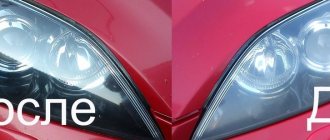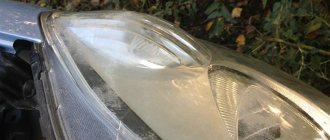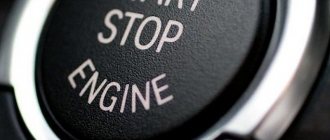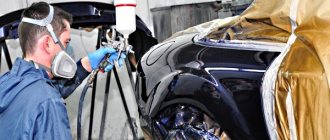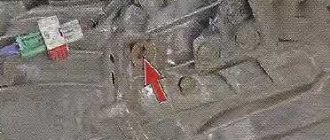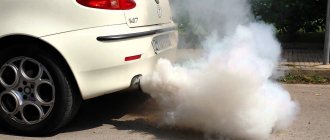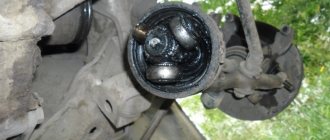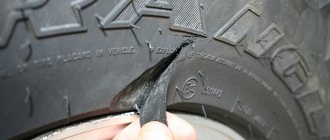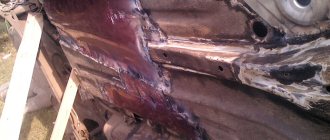Buying a car now is not too difficult - there are a variety of loans and installment payment programs. It is much more difficult to maintain it so that it is always in good working order, and its appearance remains the same as when it first left the point of sale. Regular washing of the car cannot completely solve all problems, because in addition to the body, the car has headlights, the cleanliness of which determines not only the appearance, but also traffic safety. Conventional washing does not allow you to completely get rid of the yellow coating that quickly appears on the glass during use. Polishing the headlights with toothpaste will help you quickly get them in order.
What is important to know
It's no secret that some even use sandpaper to restore the surface of the head or rear optics of a car. On Drive2 you can find many similar stories and instructions.
Car optics need constant protection from negative influences from the environment, roads and other road users. The outer surface is constantly exposed to dust, dirt, mechanical damage, chemicals, etc. To clean it and restore its previous transparency and light transmittance, you need to take an appropriate care and restoration kit. The market range is huge, which is why many cannot decide what is best for them to use.
Some people buy a special 3M type kit, which already contains everything needed for polishing. Others use toothpaste, others use goyim toothpaste, and still others buy branded products that have received the most positive reviews.
The price of pastes varies, as does their composition. It’s quite difficult to say unequivocally which one is the best. Some believe that only abrasive, and diamond, paste is suitable for such tasks. Others categorically refuse the idea of using any abrasive for fear of damaging the headlight material.
To make the right choice, you need to consider several points:
- Material of manufacture. Some compounds are intended only for glass headlights, others exclusively for plastic ones. But there are also universal solutions;
- Severity of damage. There are chips and deep scratches that pastes cannot save from. But there are also simply cloudings, yellowing, minor scratches and abrasions;
- Matching the specific headlight. If you can find out which polishing agents are suitable for your type of optics, that would be great.
The polishing process itself is done with your own hands or with a grinder. In the latter case, it is better to use a device in which the speed is regulated.
You can process glass headlights yourself without fear of any special consequences. But when working with plastic, it is better to contact a car service. The only downside is that the price of the service is quite high. Both in Minsk and in Moscow. But there is a minimum risk of harming the car. What do you think about this? Leave feedback.
Why is this necessary?
The first question that arises for those who want to restore the surface of a car headlight with their own hands is why is this necessary, and is it even worth spending your own effort and money on such work? Anticipating numerous thoughts and hypotheses, we will answer right away: such work, done with your own hands or with the help of a professional craftsman, will not only return the car to its former luster. The main goal of the procedure is to restore the power of the light beam, which should propagate from the lamp through the lens.
Indeed, it is clearly visible that clouded glass does not conduct light well. If you open a school physics textbook, it becomes clear why. The fact is that a light beam passing through a lens is refracted and redirected in the required direction. If the surface of the headlight is riddled with numerous scratches, chips and damage, then the rays will be refracted chaotically, due to which the light will be scattered unevenly.
How often should you do this? The answer to this question can be given by analyzing how often the car is used and how much people drive it. If the car is mostly parked in a garage, then you don’t need to worry too much about the condition of the glass: usually, light polishing is required every 3-5 years without the use of expensive professional polish.
The situation is completely different if the car is driven constantly and a lot. In this case, within a couple of years the surface of the glass becomes cloudy and rough, due to which the light is scattered poorly and ineffectively. Typically, to correct the problem, a set of polishing discs and a special polish, which can be purchased at a car store, are used.
Polishing car headlights with toothpaste
A brand new, shiny car is a source of pride for its owner. True, you won’t have to enjoy such an impeccable appearance for long, because scratches and other minor damage quickly appear. They talk a lot and often about car care, the need to replace parts, and service mileage. But they prefer to remain silent about body care, as if it doesn’t need it.
We recommend: Air conditioning not working? Causes
Today we propose to discuss the topic “Polishing headlights with toothpaste.” The polishing technology is simple, and anyone can cope with the task. However, this work must be done at home competently, observing all the rules and nuances. Polishing car headlights with toothpaste will be successful and will give you an excellent result only if the process is carefully studied. It is necessary to understand the types of polishing, understand what preparatory work to do, what materials and tools are needed.
Reasons for polishing
The main factors that cause deterioration in headlight performance include:
- small stones, sand (it acts as an abrasive and helps to give the surface a dull appearance);
- gasoline, engine oil;
- drops of molten road surface. They often fall on the glass from under the wheels of the car driving ahead;
- dirt, dust;
- aggressive detergents.
If the scratches on plastic or glass components are shallow, it will not be difficult to solve the problem yourself without resorting to the services of a service station. If the scratches are serious and deep, abrasives, special polishing machines, or replacement of components can help.
Pros and cons of polishing
Any product (Colgate pastes are most often used for polishing) includes soft abrasive particles designed to remove plaque. Processing the glass cover will not reduce scratches more than 3 mm deep, and it will also not be possible to sand the chips.
Polishing plastic headlights gives a greater effect. Soft plastic, after being hit by gravel, becomes covered with a fine web of shallow cracks, which are easier to polish with a soft abrasive. Among the advantages of this method are the following:
- the ability to carry out work anywhere independently;
- cost - the price of a tube of paste;
- low time investment (from 30 minutes).
The disadvantage of this method is the lack of long-term effect. Polishing with toothpaste only brightens the headlight for a few months. Cosmetic polishing will have to be done constantly.
For a long-lasting effect after polishing, it is recommended to protect the headlight housing with armored film.
Application of technical means
Motorists often ask on forums how to polish plastic headlights with toothpaste if the manual method does not give the desired effect. Experts suggest using an electric drill. The tool is complemented by polishing attachments with varying degrees of hardness.
To begin with, before polishing, as with the manual method, the surrounding parts are sealed with tape. This is weak protection, and if you are not careful, a thin layer will not protect the paint from damage.
Then the dirt is washed off with detergents and a paste is applied to the surface. To begin with, the glass is polished with a soft disc of medium hardness. Then the device is changed. A soft polishing attachment is installed on the drill. The manipulation is repeated until the scratches are erased.
Branded pastes
Let's make a small rating of the most popular and common polishing pastes that can be used to process plastic and glass surfaces of headlights. Some of them also polish windshields, but here you should take a more careful approach to the issue of choice, studying the purpose and capabilities of a particular paste.
- Runway. Their product is called Headlight Polish. Silicone-free paste for easy application. You can process it by hand or with a sander. Costs about 350 rubles, the effect lasts 2-3 weeks;
- Lavr. Russian company offering the product Polish Restorer. Sold as a set costing 250 rubles. The composition contains a spatula, polish and several sanding papers. In addition to grinding, it creates a protective film due to wax and silicone in the composition;
- Abro. The paste is called HR230. Suitable for plastic optics only. A tube will cost 300 rubles. Excellently restores transparency and protects the surface. But you need to use it at least once every 3 months;
- Saphire. Good manufacturer of head lamp polish. It literally costs 160 rubles. It is recommended to order only through an authorized dealer. Restores transparency, does not require the use of a grinder;
- Sonax. Removes scratches well and is suitable for treating surfaces made of plexiglass. Can also be used for glass optics. Excellent German quality.
We recommend: When should you change brake fluid?
What good pastes for working with automotive optics do you know? What else would you include on this list, or what tools would you cross off from it, based on personal experience? Be sure to write, it will be interesting and useful.
Of course, the list of good pastas does not end there. The market range is huge. I have named only those that are popular and that I have encountered personally and received a positive impression.
Can you polish headlights with toothpaste?
Headlight polishing
Headlights play an important role, but they are constantly exposed to mechanical stress, that is, they suffer from gravel, pebbles and other debris that fly out from under the wheels of cars. Over time, this leads to a decrease in the brightness of the headlights, and it also looks unsightly. Damage cannot be avoided, so regular polishing of plastic headlights with toothpaste is necessary. You can go to a salon, but it’s cheaper to do it yourself.
So, for work you will need: • water; • scotch; • degreaser; • towels; • brush; • pasta. It would be a good idea to have a piece of felt or felt on hand. An electric drill with attachments may also come in handy.
Polishing headlights with toothpaste with your own hands is carried out in the following sequence:
- First, you need to protect all metal parts and seals from the effects of abrasives.
- Clean the headlights from dust and dirt.
- Apply toothpaste to the headlights and begin to rub it using felt, felt or a brush. This must be done until the scratches disappear, adding paste if necessary. An electric drill with special attachments will make your work easier.
- Clean the polished surface from any remaining paste.
How to polish headlights made of different materials with toothpaste?
Polishing plastic headlights
The process of processing plastic and glass surfaces is no different. True, you need to work with glass more carefully, using brushes of medium hardness.
We recommend: How to repair a xenon ignition unit with your own hands
The entire procedure can take from 30 minutes to several hours, and the duration depends on factors such as:
- scratch depth;
- what product is used;
- polishing method (manual or automated);
- the material from which the headlight is made.
Drivers leave quite good reviews about polishing headlights with toothpaste, which indicates the effectiveness of the method. The main advantage is low cost, quick results, usually no special tools or equipment are needed, and you can polish headlights anywhere (even on the road).
Polishing headlights with toothpaste gives short-term results
To be fair, it is worth mentioning the shortcomings. The most important thing is that the results are short-lived, so the procedure will have to be repeated often. It is also possible to easily damage a glass headlight if you do not exercise due care and attention. In general, polishing headlights at home with toothpaste is the best way to quickly return them to their original appearance and eliminate minor damage.
How to polish
Tools and devices that will be needed for work:
- degreaser for glass and plastic surfaces (alcohol-based);
- construction tape (you can use soft mounting tape);
- felt napkins (clean lint-free rags, soft cotton fabric will do, but not calico);
- cleaning brush.
Do-it-yourself surface treatment can be made faster and easier if you use a drill with a soft polishing attachment or a polishing machine.
Polish the headlights with toothpaste step by step:
- Wash and dry the headlight thoroughly.
- Wipe the caps with degreaser.
- If polishing is carried out on a car, seal the body parts adjacent to the headlight with masking tape so as not to scratch the paintwork.
- Squeeze the cleaning product onto the felt roller.
- Rub the surface in a circular motion.
- If a disc is used, the paste is applied to it.
- Wash off the paste from the polished surface and wipe the headlight.
To ensure that the result lasts more than 2 months, it is recommended to apply a protective varnish.
Plastic case
Plastic is the most pliable material for grinding. Polishing your headlights yourself eliminates significant (deep and long) scratches. The paste is useless if you try to remove significant chips.
Alternative Cleaners
Having mastered the above unpretentious recipe, you can try more complex cleaning methods - using specialized cleaners. Here you can’t do without a special device - a thickness gauge
, – which will prevent damage to the paint or enamel layer during operation.
3M polishing kits as cleaning agents.
and the like, including kits for polishing headlights and bodywork; GOI paste of varying degrees of impact (from fine to coarse), abrasive special polishes.
The latter are intended for the most advanced cases; the active chemicals they contain corrode almost any extraneous deposits. But here you need to take special care - aggressive action on the surface poses a serious danger to the enamel. It should be used only after consultation with specialists!
Let's return to the main idea of the article:
The most acceptable way to clean headlights is to treat them with toothpaste - this option is absolutely safe and extremely economical, and the achieved result is more than acceptable. A review of polishing headlights with toothpaste is a guide to action for caring motorists who are seriously concerned about the appearance of their car.
Medicines
Drug therapy is prescribed to everyone. The course includes the following drugs:
- analgesics;
- local anesthetics;
- NSAIDs;
- muscle relaxants;
- diuretics;
- chondroprotectors;
- steroids;
- external agents.
Analgesics (Ketorol, Analgin and similar drugs) relieve pain faster if administered intramuscularly. In the future, oral administration of medications is indicated.
Pinching is often treated with a block using local anesthetics. Lidocaine injections are prescribed, which do not last long, but are enough to relieve acute pain. The same method is used for diseases such as sciatica.
NSAIDs – non-steroidal anti-inflammatory drugs. They eliminate inflammation and reduce pain. In the first days of an exacerbation, injections are indicated, after which internal (oral) administration is indicated. The group of such drugs includes Nimesulide, Diclofenac, Ibuprofen, Ketoprofen and so on.
Muscle relaxants - this group of drugs relieves muscle spasm, which helps release the pudendal nerve. Such drugs include Tizanidine, Tolperisone, Gamma-aminobutyric acid (GABA).
Diuretics - they are prescribed in a short course to relieve internal swelling in the thigh. Swelling always accompanies injury and also provokes discomfort.
Chondroprotectors - this group of drugs is indicated for degenerative processes in the joint, which caused the infringement, since drugs in this group stimulate the restoration of cartilage. The most common: Teraflex, Chondroitin, Glucosamine, Structum.
Steroids (Prednisolone, Dexamethasone) – these drugs effectively relieve swelling and inflammation. Prescribed by injection in a short course under strict medical supervision. They are used only in cases where NSAIDs do not give the desired result. Both dexamethasone and prednisolone are potent hormonal drugs that should not be abused.
External products - ointments, gels - contain NSAIDs. They can have a warming effect, which relieves muscle spasms and improves blood circulation in the back, buttocks, and thigh.
